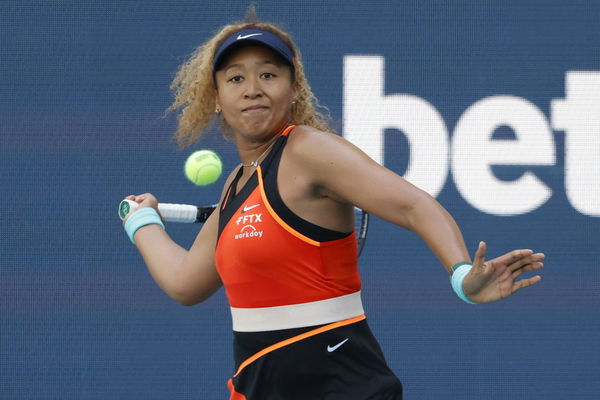
USA Today via Reuters
Mar 28, 2022; Miami Gardens, FL, USA; Naomi Osaka (JPN) hits a forehand against Alison Riske (USA)(not pictured) in a fourth round women’s singles match in the Miami Open at Hard Rock Stadium. Mandatory Credit: Geoff Burke-USA TODAY Sports

USA Today via Reuters
Mar 28, 2022; Miami Gardens, FL, USA; Naomi Osaka (JPN) hits a forehand against Alison Riske (USA)(not pictured) in a fourth round women’s singles match in the Miami Open at Hard Rock Stadium. Mandatory Credit: Geoff Burke-USA TODAY Sports
It is no secret that athletes make quite a bank once they become successful. The list of top earners in the WTA is out. However, this list comes with quite a shock. The WTA prize money has moved on to the path of improvement in the last couple of years. Even though players often pick the issue of pay disparity, it can’t be denied that earnings have improved. However, there’s a catch.
Despite the shining numbers, the new list sheds light on how far behind the WTA prize money actually is when compared with endorsements. The top earners of the WTA have a lot to thank their sponsorship deals for.
Why the WTA prize money falls short
ADVERTISEMENT
Article continues below this ad
In the ever-evolving world of women’s tennis, a startling revelation has emerged as we dissect the earnings of top players. Beyond the courts and trophies, a considerable disparity still exists between prize money and endorsement deals. The Women’s Tennis Association (WTA) has undeniably made strides in bolstering the prize money. Yet, a substantial gap persists when compared to the lucrative numbers by the endorsements.
🎾 2023 earnings:
1/ Coco Gauff ($6.7M prize money + $16M endorsements)
2/ Iga Swiatek ($9.9M + $12M)
4/ Emma Raducanu ($238K + $16M)
5/ Naomi Osaka ($0 + $15M)
6/ Aryna Sabalenka ($8.2M + $4M)
7/ Elena Rybakina ($5.5M + $4M)
8/ Jessica Pegula ($6M + $3M) https://t.co/5STp8kEjA7— Bastien Fachan (@BastienFachan) December 6, 2023
As athletes climb the ranks, their financial success becomes a combination of skill on the court and sponsorships. The juxtaposition is evident in the earnings of prominent players. Take, for instance, the rising star Coco Gauff, whose on-court prowess has earned her $6.7 million in prize money. However, this figure pales in comparison to the staggering $16 million she rakes in from endorsements.
This stark contrast is not an isolated incident. Iga Swiatek, Emma Raducanu, and Naomi Osaka further exemplify this divide. Osaka did not earn a penny from the courts this season yet she managed to earn $15 million by endorsements.
The prize money they accumulate on the tour is merely a fraction of the financial windfall brought in by endorsement deals. The allure of association with top-tier brands proves to be a game-changer in these athletes’ financial portfolios. The WTA, while making strides in recognizing and rectifying pay disparities, is constrained by its nature as an association.
ADVERTISEMENT
Article continues below this ad
The importance of bridging the pay gap
In the pursuit of excellence on the tennis courts, athletes face not only formidable opponents but also the demanding schedule imposed by the association. As we scrutinize the earnings of top players, a glaring concern emerges as well. The exhaustive efforts exerted by athletes are not always reciprocated in their paychecks. While the WTA has commendably increased prize money, the current figures underscore a stark reality.
The compensation does not align with the physical and mental toll extracted from these athletes. Not every player enjoys the spotlight or lucrative endorsement deals. This makes it imperative for the association to address the glaring pay gap.
ADVERTISEMENT
Article continues below this ad
The ball is in the WTA’s court to bridge this divide and ensure fair compensation for all its athletes. Closing this earnings gap poses a formidable challenge. What are your thoughts on this? Let us know in the comments.
WATCH THIS STORY: 19-Year-Old Coco Gauff Reveals Plans Featuring Drake and Jaden Smith to Revolutionize the Not-So-Cool Tennis

